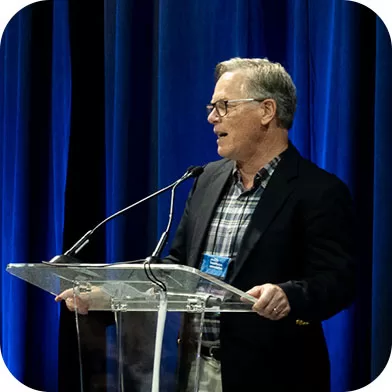Striving for Equity: Riding to Success with Mobile Health

The Leon Lowenstein Foundation awarded funding to the Mobile Healthcare Association to build the capacity of the Association and grow the mobile healthcare field.
Stewart Hudson, Executive Director, Leon Lowenstein Foundation
The Leon Lowenstein Foundation (LLF) is a family foundation established in 1941 with a focus on health, education, and the environment. In 2019, LLF adopted a new focus area for our health grantmaking. Our goal was to develop a strategy that would enable us to make a meaningful contribution to health equity, particularly through enhanced access to primary and preventive health services in disadvantaged communities.
Luckily for us, we met Dr. Nancy Oriol, the founder of the Family Van, a public health program delivering community services through a mobile clinic sponsored by the Harvard Medical School. Nancy introduced us to her colleagues at the Mobile Healthcare Association (MHA) and the Mobile Health Map (MHM) program. From Nancy and these leaders in the field, we learned about the role mobile health clinics play in providing access to health services, especially to low and moderate-income patients in rural and urban communities across the United States. We provided initial grant support for MHA and MHM and eventually expanded funding to other partners, such as the National Association of Community Health Centers. Through funding and periodic convenings of LLF grantees, we have gained a greater understanding of the mobile health sector and are now more confident in our ability to achieve success in this area. With this in mind, we stand ready with our partners to implement an action plan for achieving an audacious but exciting goal—doubling the number of mobile health clinics in the U.S. by 2028, a goal we refer to as “2x by ‘28.”
Opportunity Knocks
The opportunity to achieve such dramatic growth in mobile health delivery results from several factors. Over the past decade, hospital systems have realized that mobile delivery can help reduce emergency room and urgent care visits, an innovation in health delivery that helps people and reduces non-reimbursed healthcare expenditures. With rural hospitals closing at historic rates, mobile delivery has become one obvious mechanism for providing greater access to health services. In urban areas, mobile delivery can reach critical patient populations who would otherwise fall through the cracks in traditional health systems. During COVID, when it was vital to provide vaccines for millions of patients in disadvantaged rural and urban communities, mobile delivery proved essential.
What kind of opportunity does “2x by ‘28” represent? Currently, there are approximately 3000 mobile health clinics in the U.S. Doubling the number of clinics would increase the number of patients served from 10 million to 20 million and benefit vulnerable patient populations in rural as well as urban communities.
Making the Most of this Moment
To make the most of this moment of opportunity, LLF adopted a nimble and partnership-based approach to our role in supporting the “2x by ‘28” goal. We adopted a concise grantmaking strategy that seeks to improve health equity and requires us to go deep into supporting mobile health delivery as one important way of achieving that outcome. The strategy involves engaging our grantee partners in strategy development, where it needs to evolve, and our thought process about what organizations to fund along the way.
In addition, our partners participated in creating an action plan for the mobile health sector, which is essentially a blueprint for the efforts we and others will make to achieve the “2x by ‘28” goal. For us, investing in a partnership approach to achieving our goal is a practical choice—a way of doing business that builds on trust and moves more efficiently.
Going the Distance
The field of mobile health delivery is growing rapidly and represents a significant step toward health equity in the U.S. The increased number of mobile health clinics in the nonprofit sector is made possible by the lead organizations cited above and others. Hospital systems and insurers are recognizing the utility of mobile delivery to improve their dual objectives of profitability and effective patient care. And even though their efforts do not prioritize those most in need, the private sector is also getting in on the act, given the opportunities mobile delivery creates for their customers and clients, and their bottom line.
However, we know that achieving “2x by ‘28” will require a much broader and more coordinated effort. Therefore, one of our most important next steps is to help build this into a movement. Over the next several months, we will organize webinars, engage in outreach to like-minded organizations, and provide additional resources to help make the case for mobile health delivery. We will also increase our communication with other funders—not just those who fund mobile health delivery, but also those whose objectives intersect with this area of interest. We will continue funding in support of mobile health delivery and health equity because the goal of doubling mobile health clinics by 2028 and providing greater access to primary care and preventive medicine is within our grasp.